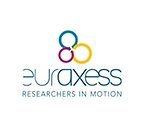Co-operation Projects
The following projects sort under the Research Division Directorate.
GBIF
Since 2001 the Global Biodiversity Information Facility has created an international research infrastructure which serves researchers, authorities and the general public with information from the vast amount of data kept in museum databases, libraries and observational datasets over the Internet (https://gbif.org ).
).
A large number of nations and organisations contribute to this network, and located at the Swedish Museum of Natural History, the Swedish national node GBIF-Sweden collaborates within the worldwide Biodiversity informatics community in aggregating data and by developing systems for presentation, visualization and analysis of biodiversity data.
From 2018, the natural history museum in Stockholm also hosts a new national research infrastructure, Biodiversity Atlas Sweden (https://bioatlas.se ), which combines a number of related activities (including GBIF-Sweden) under a single heading.
), which combines a number of related activities (including GBIF-Sweden) under a single heading.
GEO BON
Group on Earth Observations Biodiversity Observation Network was initiated in order to enable wise decisions centred upon sustainable human use of the natural resources.
By lending access to coordinated information from biological observations, and by building tools for analysis of the huge amount of biodiversity and geophysics data now available GEO BON will contribute to the informed valuation of ecosystem services and the establishment of Essential Biodiversity Values (EBVs).
The Swedish GBIF node has entered the role of observer in GEO BON, aiming to contribute by forwarding information from Swedish data sources.
UNEP
The Swedish museum of Natural History participates in the United Nations Environmental Programme (UNEP) by co-authoring regularly launched reports on the state of the environment in global context. All such reports including the most recent text GEO-6 are available at http://web.unep.org/geo/ .
.
SYNTHESYS
In SYNTHESYS, major European Natural History museums, biodiversity institutions, biodiversity networks and companies joined to create an integrated research infrastructure for researchers in the natural sciences in Europe and globally. The world’s natural history collections comprise at least 2 billion specimens, of which an estimated 55% reside in Europe. The European collections are thus a major research resource representing 80% of the World’s bio- and geo-diversity.
In August 2018, the EC granted for a fourth time financial support to the SYNTHESYS network from its Framework Program for Research and Innovation (HORIZON2020).
SYNTHESYS⁺ is a coalition of 32 partners from 23 European countries and the United States within the frame of DiSSCo. The project starts on 1 February 2019 and will last for four years. The overall objectives are to facilitate, integrate and coordinate the access to and the utilization of biodiversity collections and –data assembled at the partner organisations and beyond.
Read more on at NRM:s SYNTHESYS+ web site
DiSSCo
DiSSCo is a new pan-European Research Infrastructure initiative assembling more than 110 Natural History institutions from 21 European countries. It is built on top of CETAF (Consortium of European Taxonomic Facilities; https://www.cetaf.org/ ) the European network of natural sciences collections-based institutions, and widens the collaborations established during 13 years of SYNTHESYS.
) the European network of natural sciences collections-based institutions, and widens the collaborations established during 13 years of SYNTHESYS.
DiSSCo’s mission is mobilize, unify and deliver bio- and geo-diversity information retrieved from natural science collections for the use by scientific communities and the society. Collection data contribute to solve scientific questions, to support innovations, and to tackle societal challenges.
Read more on DiSSCo (http://www.dissco.eu/)
Fishbase
Fishbase is the is the world’s largest encyclopedia about fish, providing curated information about all fishes, available for free online.
Fishbase is developed and maintained by a global consortium consisting of twelve museums and research institutions, among them the Swedish Museum of Natural History.
In Fishbase http://fishbase.se you can find more than 55 000 images fishes, distribution maps, biological information and much more for the more than 33 000 known species of fishes.
you can find more than 55 000 images fishes, distribution maps, biological information and much more for the more than 33 000 known species of fishes.
NordSIM-Vegacenter
Since January 2018 the the NordSIM laboratory is merged with Vegacenter under the name NordSIM-Vegacenter. The joint Swedish national facility is funded by Vetenskapsrådet and Naturhistoriska riksmuseet.
The NordSIM-laboratory is located at the Department of Geosciences at the Swedish Museum of Natural History in Stockholm. It is based around a Cameca 1280 ion microprobe, an advanced mass spectrometer which allows direct in situ measurement of isotopic and elemental composition in selected micrometer sized areas of a sample.
The Vegacenter is based around two inductively coupled plasma mass spectrometers (ICP-MS) that can be connected to a laser ablation (LA) system for microsampling. In addition, the facility is equipped with a gas chromatograph for compound-specific isotope analysis (CSIA).
Find out more:

Euraxess - Researchers in Motion
The Euraxess portal features links to 200 service centers in 35 European countries. Here visiting scientists can find information about research opportunities and practicalities of living conditions in different countries.



